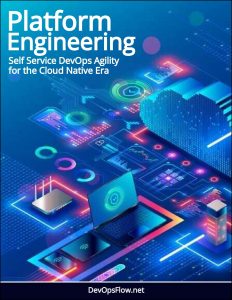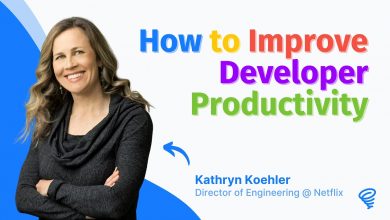GitLab: Accelerating Developer Velocity With Effective Platform Teams
Platform engineering with GitLab empowers organizations to boost developer velocity by creating a seamless, efficient, and collaborative development environment.
 Writing for The New Stack Bryan Ross outlines three key strategies for building effective platform teams to enhance developer velocity.
Writing for The New Stack Bryan Ross outlines three key strategies for building effective platform teams to enhance developer velocity.
First, measure what matters by tracking adoption rates and developer velocity to ensure platforms align with business outcomes.
Second, cultivate customer champions by involving key users to shape platform features, fostering collaboration and trust. Third, make the right way the easy way by designing platforms that developers naturally prefer due to their efficiency and ease of use.
Bryan article emphasizes that successful platform teams create collaborative ecosystems, reducing developer cognitive load and enabling faster, higher-quality software delivery. He highlights the importance of understanding developers’ daily challenges, using self-service capabilities, and gathering feedback through surveys and user research to drive continuous improvement.
Developer Velocity
Developer velocity refers to the speed and efficiency with which developers can deliver high-quality software, features, or updates. It’s a measure of productivity that focuses on how quickly teams can move from ideation to deployment while maintaining code quality, reliability, and alignment with business goals.
Key aspects include:
- Cycle Time: The time it takes to complete a development task, from coding to deployment.
- Efficiency: Reducing friction in workflows, such as minimizing manual processes or resolving dependencies.
- Collaboration: Effective teamwork and communication within and across teams.
- Tooling and Platforms: Access to streamlined tools, automated testing, CI/CD pipelines, and self-service platforms that reduce cognitive load.
- Quality: Delivering functional, reliable software without excessive rework or bugs.
High developer velocity is achieved when teams have clear processes, minimal blockers, and platforms that make the “right way” (e.g., secure, scalable practices) the easiest path.
For example Bryan emphasizes how platform teams can boost velocity by measuring adoption, fostering collaboration with developers, and designing intuitive systems that align with their needs. It’s not just about coding faster but enabling developers to focus on creating value rather than navigating obstacles.
GitLab
Platform engineering with GitLab empowers organizations to boost developer velocity by creating a seamless, efficient, and collaborative development environment.
It fosters collaboration by integrating issue tracking and Agile boards, enabling platform teams to engage developers in shaping tools through transparent feedback and sprint planning. GitLab simplifies workflows by unifying planning, coding, testing, and deployment within a single platform, reducing complexity and cognitive load.
Its robust CI/CD automation, featuring parallel testing and built-in security scans, streamlines delivery while maintaining quality. By leveraging GitLab Flow for efficient branching and self-service features like container registries, platform engineering with GitLab ensures developers can focus on delivering value quickly, making secure, scalable practices the default for high-velocity software development.



